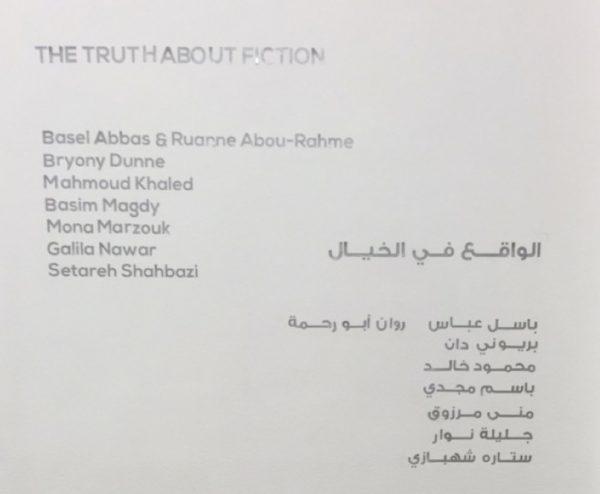The Truth About Fiction Investigates the Role of the Image in Contemporary Art
By Farida Ayoub
The image has long been a central element in the history of visual arts. A new exhibition called “The Truth About Fiction” questions how artists can deploy such images to create narratives and complicate the line between truth and falsehood.
“The Truth about Fiction” features works by eight different Egyptian and international artists, which took place at the Gypsum Gallery in Garden City throughout February.
On display was a wide collection of photos, movies and artistic masterpieces that investigate how the picture goes about as a container for individual and political knowledge.
Iranian artist Setareh Shahbazi’s collection is the first thing one lays eyes on upon entering the gallery. Composed of eight colorful photographs placed symmetrically on one wall, Shahbazi’s work consists mainly of classification.
Her undertakings regularly start with photos: pictures from private albums, snapshots taken by her, family photographs, film stills and postcards. With a fun-loving flippancy to the holiness of a photo as a reflection of reality, Shahbazi drains points of interest out of pictures.
She separates the pictures into visual parts by using digital manipulation and flawlessly reordering what she removed into new compositions that are well known, but simultaneously bizarre.
“Renovabitvr (Renewal)” is a stand-alone painting on a big white wall by artist Mona Marzouk, whose objective is to redefine how people see the world through her interest in architecture.
“Google Me/Duplicate Self-Portrait” by Mahmoud Khaled presents spectators with two pictures as objects. Each picture is of a dark screenshot showing a solitary frame pulled from a public performance at the same moment. Both screen captures are taken at minute 1:09; one demonstrates the artist himself, and the other demonstrates a belly dancer.
Blending photography and video with sculptural structures, sound and content, Khaled’s subjects are regularly offbeat. The strength of his work lies in its sensitive explanation of a weakness that describes the human condition, regardless of whether we buy in to a standard esteem framework or not.
The oil on canvas titled “Nesrine I” by Egyptian artist Galila Nawar’s portrays a woman who looks exhausted, the colors, just like the woman in the painting, are unfocused and dull.
“Nesrine I” is one out of many pieces of progression of representations in view of photos portraying troubled people who have recently been caught, unwarrantably taken and distributed by the press.
Nawar’s enthusiasm for portraiture lies in the strain between the idle and the show; from one viewpoint, the persona that is displayed in a stance or caught snapshot, and on another hand the genuine individual behind it.
She paints from certain photos that enable her to see past the posture and make her very own narrative. Through the details of a look, she endeavors to locate a widespread human feeling or a dramatization particular to a specific time or setting.
Unlike all the other walls of the gallery, one is painted in violet since it is one of Basim Magdy’s artwork.
“We’re all victims of our own adopted fantasies here (reprise)” is a collage that convinces viewers to encounter the entire art piece rather than just parts of it. Shades of red and blue take over across five photos of a lady.
The language of art is unquestionably most integral to the experience of “The Truth about Fiction,” seeing as words can be depicted as the principal medium of fiction. The works displayed exhibit the numerous manners by which truth can be fictionalized and exactly indicate the number of faces fiction can have.
Created over the traverse of the most recent 10 years, these works incite us to reexamine what we find in connection to sentiments and convictions. Expanding on tropes of truth, aesthetics and image production, these particular works feature the flexibility of visuals and their capability to open up and decrease truth or fiction.




